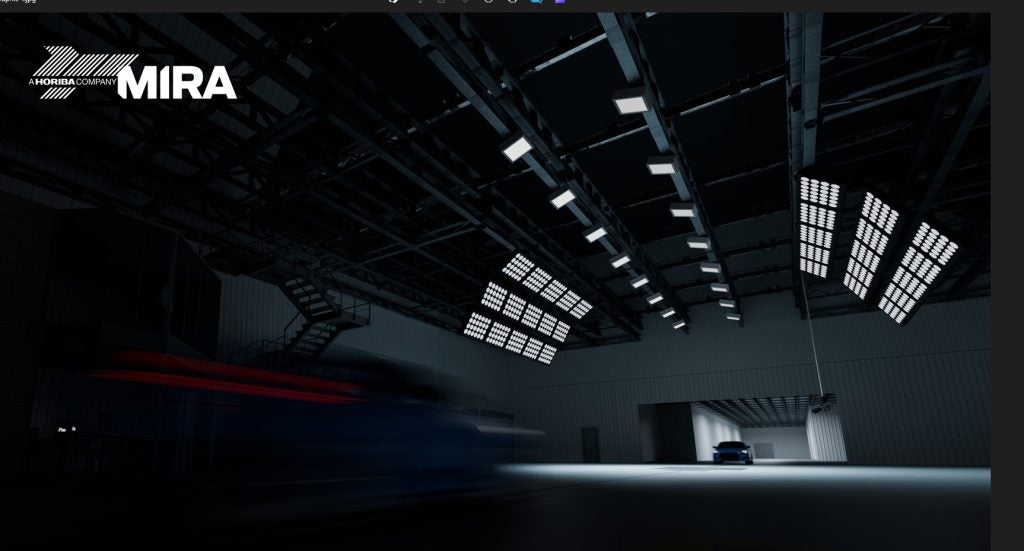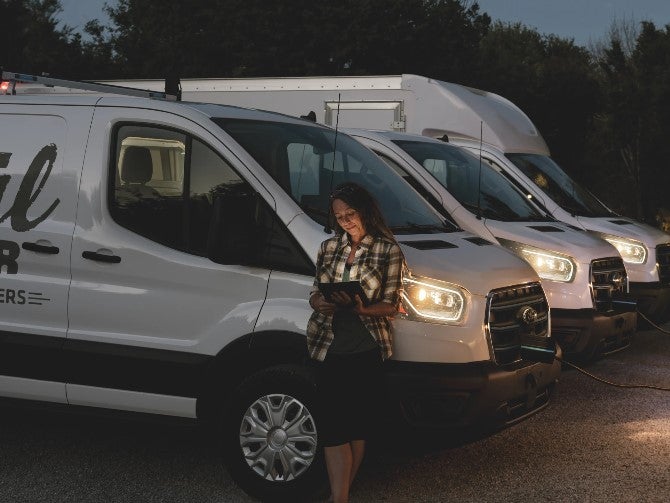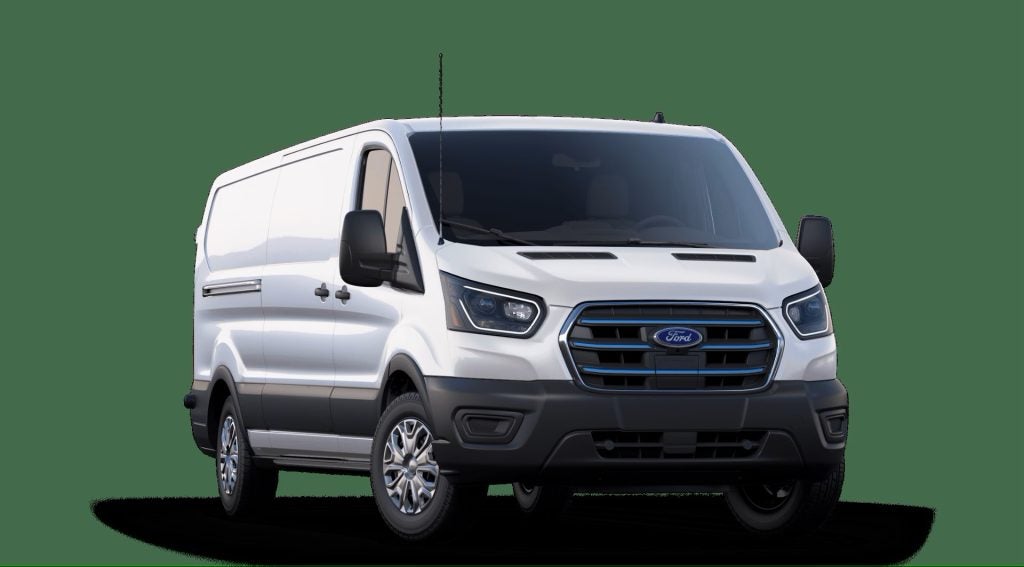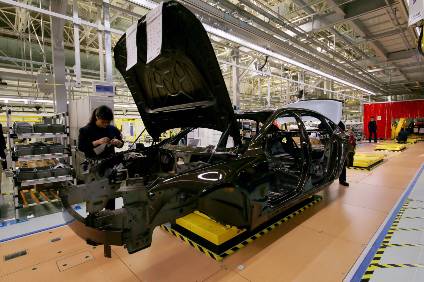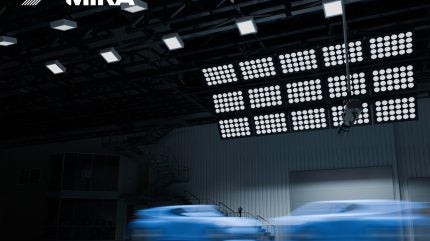
Taking steps towards safeguarding the UK’s future as an automotive safety testing powerhouse, Horiba Mira is upgrading and investing in its Passive Safety Engineering Centre, located in the UK’s West Midlands.
The investment will allow the UK to attract, and continue to maintain, important vehicle safety engineering and test work from UK and non-UK based manufacturers. Construction work is nearing completion with hopes to have the centre up and running in the summer, allowing OEMs to undertake a full selection of safety compliance tests, including those set out by Euro NCAP.
We spoke to Graeme Stewart, chief technical officer, Horiba Mira, and Chris Reeves, head of connected & autonomous vehicles, Horiba Mira, to learn more about the centre and the tests which can be carried out.
Just Auto (JA): Could you provide some background on your roles?
Graeme Stewart (GS): I’m chief technical officer. Within my role, I’m responsible for all our technical projects. I work closely with our customers to understand what their needs are, where the market is going and how we need to strategically position business in the in the longer-term to see that we’re meeting the market needs.
How well do you really know your competitors?
Access the most comprehensive Company Profiles on the market, powered by GlobalData. Save hours of research. Gain competitive edge.

Thank you!
Your download email will arrive shortly
Not ready to buy yet? Download a free sample
We are confident about the unique quality of our Company Profiles. However, we want you to make the most beneficial decision for your business, so we offer a free sample that you can download by submitting the below form
By GlobalDataThen I have to make sure that we get the appropriate plans in place to be able to deliver those capabilities to support our UK and international customers.
Chris Reeves (CR): I head up connected autonomous vehicle technologies. My role is to understand these technologies, particularly as we progress through to higher levels of active safety and automation, to ensure they’re safe, secure, and functionally robust.
Obviously, passive safety is a part of that challenge to ensure that these systems meet consumer expectations.
What is the Active Safety Centre?
GS: Our passive safety lab conducts crash-testing on vehicles. We’ve been doing that for around 30 years. We are a well-established name in the marketplace and work closely with customers and with the likes of Euro NCAP to conduct testing.
It’s a key part of our business to improve lives by making driving safer, cleaner and smarter and it’s a real core element of what we do, focusing on improving the safety of vehicles on the roads. So many people are killed and seriously injured in road traffic accidents, and we’ve been very active for decades in this field.
The marketplace is always moving and changing, and the technologies themselves are changing.
The marketplace is always moving and changing, and the technologies themselves are changing. This is one piece of a jigsaw puzzle. Passive safety is a critically important element when a crash or a collision occurs, in order to protect the occupants and any pedestrians.
There have also been changes to Euro NCAP standards over recent years to introduce a new test which is a car-to-car test, a significant upgrade, and the lab allows us to conduct that test. It is the main enhancement that we’re doing and that involves a significant extension to the test lab.
It can conduct the test so that we can essentially throw in or bring a vehicle moving from the opposite direction, or bring a sled with a barrier on the front, to crash into the car and do that at an offset position. Replicating an offset head on collision is a test that has been added in recent years.
Where Chris is particularly active is all the work that we’re doing on the active safety side as well. This is where we’re spending a huge amount of our effort and have been over the last few years.
The safety lab is an element or a piece of that jigsaw puzzle, which is really focusing on getting a net result of improved safety of vehicles on the road. We’ve had our Euro NCAP accreditation extended for active safety testing. That means we can really make a much bigger impact in the UK, European and global stages with regards to how we can support customers domestically and internationally.
This is one element of a much bigger overall strategy and approach from us to reduce the severity and the incidence of accidents on the road.
CR: As technology advances, the complexity on how we understand how that technology performs also increases. We’re seeing ever increasing complexity in the verification and validation processes that we must use.
What we aim to do is also consider emerging techniques and we have to do that within the infrastructure that we’re creating here in the facilities that we’re building. Also, we must use simulation and modelling techniques.
What can you test at the centre?
GS: We’re an independent company in the automotive space. We test vehicles for all sorts of customers; automotive OEMs, Tier 1 one suppliers, or technology developers. It can involve working on advanced tech such as LiDAR, radar camera systems – to test how well those operate.
We pride ourselves on the capability that we have within the company. Our infrastructure is globally unique in terms of what we can do from a simulation perspective, what we can do from conducting tests in a safe environment – the facilities we have are globally unique.
We pride ourselves on the capability that we have within the company.
At the centre we can test high-speed scenarios with the dynamic platform and the parking structure that we have. It is – we believe – still the only one in the world that operates as a dedicated purpose-built structure, which is where people can develop the likes of automated valet parking (quite widely regarded as the most likely early phase technology adoption for true level three autonomous driving systems).
This collection of capabilities is unique, to ultimately accelerate the development of safe technologies for deployment on the roads and to build user confidence.
The range of capabilities that we have is very strongly focused around getting safe vehicles, whether autonomous or human-driven, deployed onto the road. We aim to help the aim of doing that quickly and cost effectively for our customers, but also making sure that the level of risk for those vehicles when they are deployed is well understood and qualified.
Technology might be available in the vehicle, but if it’s deployed in such a way that it doesn’t get good consumer acceptance, they will turn the systems off. Good systems, when deployed, must feel natural to the driver and the other occupants.
CR: For higher levels of autonomy the safety case will be the critical component to how you get sign- off and approval. There has to be an accompanying compendium of all the supporting data, too.
This is now being accelerated because the UK government is currently progressing the autonomous vehicle bill. Part of the key requirements of that are: how do you understand whether the system is a safe and competent driver? Especially as it’s not a human driver.
What do you predict to see in the safety space in 2030?
GS: I think the main advancements are going to be coming on the on the active safety side. Passive safety almost a hygiene factor in terms of what people expect to see.
For the general consumer, they expect that if the worst comes to the worst and there is a collision that they will be safe in their vehicles. If you look at where, for example, Euro NCAP have been focusing their efforts over recent years, it’s about really enhancing the active safety side, and that will be an ongoing process – to prevent the accidents from happening in the first place.
A lot of the progress that has been made around autonomous emergency braking (AEB), lane keeping assist, etc. These technologies are really helping to reduce the number of accidents, or to reduce the severity of the accident by the vehicle providing at least some level of autonomous emergency braking or avoiding a collision.
I think we expect to see that trend continuing, particularly with the progress of level two systems as some OEMs are rolling in level two plus. It’s primarily about lightening the load of the driver, but very much still leaving them in control of the vehicle and helping them, assisting them, and keeping them and all the occupants safer.
Then of course, there’s the more uncertain matter of what comes with level three and beyond.
CR: It’s not just the occupant of the vehicle, it is also about how vehicles interact with other vulnerable road users as well – pedestrians, cyclists, powered two wheelers, e-scooters. So, we will gradually see, an incremental increase in how the systems perform in relation to those other road users.
What is the time scale for the new enhancements at the safety centre?
GS: We’ve been working on this for quite some time, for several months. Construction work is well underway. We will be launching it in the summer, so our intention is to roll this out much more broadly and at the end of the summer into early autumn.
Everything’s progressing well with all the updates, doing construction work over the winter is never an easy thing to predict, but I think we’ve done a fantastic job of keeping everything on track.
We’re at the tail end of the main construction phase, and we will have to go through all the installation, commissioning, testing and verification stage to make sure everything works as it should – but then we will be up and running during the summer.
This is open to all users and not tied or targeted in any way to any OEM or indeed any other third party. This is an independent testing centre that’s available and open to all.
